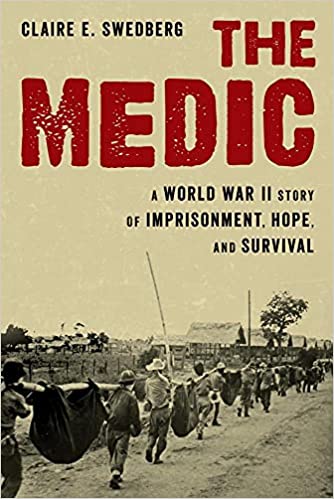Reviewed By Dr. Diana Ahmad
Stationed at Ft. McKinley Hospital Clinic in the Philippines on the day the Japanese attacked Pearl Harbor, Henry “Hank” T. Chamberlain became a prisoner of war (POW) of the Japanese by April 1942. Trained as an Army Medic and surgical technician prior to the start of the war, Chamberlain used all his skills during the next three-and-a-half years to help his fellow POWs survive as best as they could. Chamberlain witnessed the worst of human nature during his years in the Philippines and later while he worked in the mines in Sendai, Japan. Although rarely exhibited, he even noticed a few, small kindnesses by the Japanese to the POWs, as well as those the POWs offered to the Japanese guards.
After a difficult and poverty-stricken youth, Chamberlain joined the United States Army on his eighteenth birthday. He knew how to handle a rifle well but told the recruiter that he did not want to kill anyone and so the recruiter sent him to become a medic. He arrived in the Philippines in October 1941 and by early January 1942, Chamberlain started caring for the wounded from the battles at Bataan.
The author provides an easy to read, well-detailed description of Chamberlain’s experiences in the war. Relying on Chamberlain’s personal recollections of the war, as well as a limited bibliography, Claire Swedberg details the years spent at several POW camps in the Philippines and in Sendai, Japan, in addition to the “Hell Ships” that transported the POWs to Japan via Hong Kong and Formosa (Taiwan). Likely because Chamberlain served as a medic, Swedberg includes descriptions of the smells, the diseases, and the conditions in the camps. Chamberlain learned to do the best he could for the wounded or sick POWs with the few supplies he possessed, sometimes only kind words for those in need. He also grew dandelions to provide the POW’s some small nourishment.
Additionally, Swedberg looks at the small revenge that Chamberlain and his fellow POWs, male and female, were able to inflict on the Japanese. For example, the guards occasionally forced Chamberlain to clean the guards’ barracks. While cleaning, he placed lice into their beds. Although a small and insignificant gesture, he knew that the lice would cause the guards’ discomfort. Chamberlain also knew a Filipino woman with syphilis who would have sex with the Japanese guards with the intention of spreading the disease to her captors. While in the coal mines near Sendai, he and other POWs threw away tools that were needed to mine the coal, depriving the Japanese of this much needed resource. He acknowledged that none of these things were going to improve their lives in the camps, but it was a small way of harming the Japanese.
Chamberlain’s experiences teach the reader that humans are brutal, and that a war never ends for those who fought in it. However, Chamberlain also demonstrated that sometimes people could be kind, such as when a Japanese guard gave Chamberlain an egg as a thank you for assistance that the United States provided the guard and his family after the 1923 earthquake that devasted Japan.
At the end of the war, Chamberlain went home and called his mother, much to her surprise, as she had earlier received a letter telling her that her son was dead. Chamberlain then went to visit his pre-war girlfriend only to discover that she also believed him dead and married another man. After a year in the hospital recovering from the illnesses he acquired in East Asia, he joined the new United States Air Force and served in Okinawa and the Philippines. In 2017, the Japanese Ministry of Foreign Affairs invited Chamberlain to the mine at Sendai. At 95 years of age, Chamberlain returned to Sendai as the only living former resident, POW or guard, from the mine. While there, he accepted the apology offered by the Japanese for all that he and those who served with him had suffered. He then offered forgiveness to those who incarcerated him.
Diana L. Ahmad is a Curators’ Distinguished Teaching Professor with the Missouri University of Science and Technology’s Department of History and Political Science. She is also a Book Review Editor for Nevada State Historical Quarterly.
The Medic: A World War II Story of Imprisonment, Hope, and Survival (Claire E. Swedberg, Stackpole Books, Guilford, CT, 2021).


